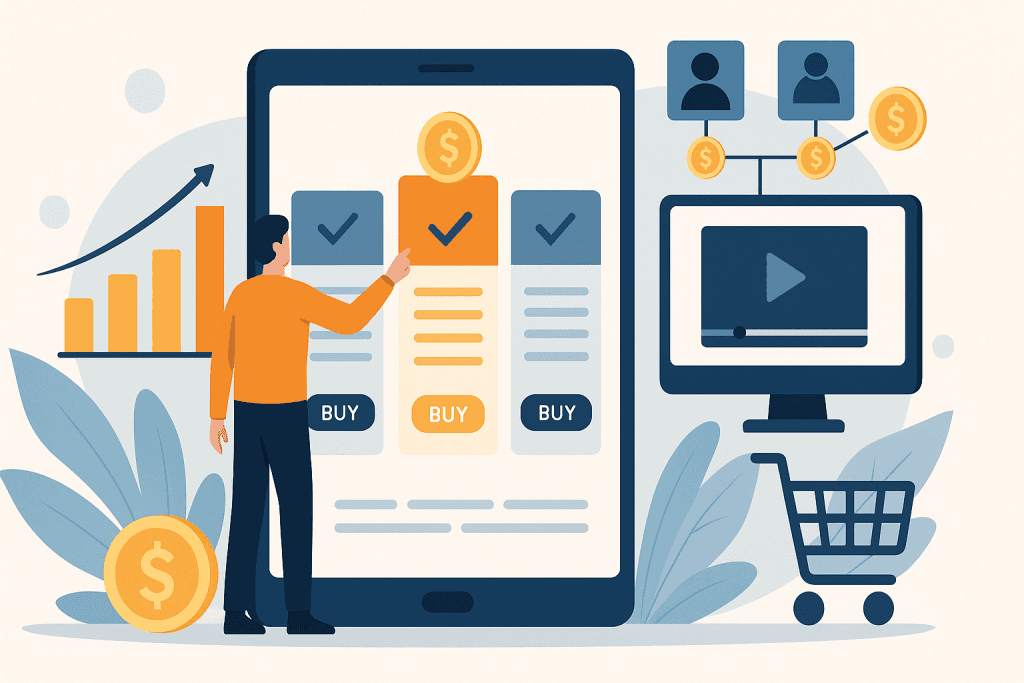
Digital products are evolving faster than ever, and so are the ways creators and companies earn from them. Traditional models like one-time purchases or basic subscriptions are no longer enough to sustain growth or satisfy modern user expectations. As interactive technologies and consumer behaviors shift, opportunities to build richer, more engaging revenue streams are emerging. This is as true for productivity apps and creative tools as it is for entertainment experiences, from mobile games to streaming platforms. In some cases, gamified elements even become part of the monetization strategy, much like the engaging approach of the lucky seven game, which blends entertainment with the thrill of chance.
Users today expect digital services to provide continuous value rather than static offerings. Instead of paying upfront, they prefer flexible access and personalized upgrades. This has created fertile ground for hybrid monetization models that merge free entry with optional enhancements. While freemium apps first popularized this idea, the concept has expanded into almost every digital sector, from education platforms to AI-powered productivity tools.
Another factor reshaping payment behavior is the rise of microtransactions. Consumers no longer shy away from spending small amounts regularly, provided each purchase feels meaningful. This opens the door for incremental upgrades, premium features, or exclusive experiences that deepen engagement. Over time, this approach can generate more revenue than a single purchase model, while also keeping the customer relationship active.

Rather than focusing purely on selling features, many companies are now monetizing experiences. This strategy places emotional value and unique interactions at the heart of the product. For example, live events, interactive webinars, and time-limited challenges can create scarcity and urgency, driving willingness to pay.
Digital experiences also open possibilities for tiered pricing. Customers can enjoy a basic version for free but pay for deeper or more immersive interactions. For instance, in gaming, cosmetic upgrades or seasonal event passes provide variety without disrupting balance for non-paying users. In creative industries, similar concepts are applied through access to premium templates, filters, or editing tools.
Modern buyers are also motivated by community-driven perks. Some businesses introduce reward systems for referring friends, participating in challenges, or contributing to content creation. These initiatives not only boost engagement but can be monetized indirectly through advertising or partnerships.
Monetization strategies are increasingly guided by data analytics. Platforms now track user behavior to deliver offers tailored to individual preferences. This personalization extends beyond recommending products; it includes dynamic pricing, where costs adjust based on demand, loyalty, or even real-time trends.
The use of AI allows companies to predict when a user is most likely to make a purchase and present relevant offers at the right moment. This targeted approach can significantly raise conversion rates without alienating customers with irrelevant promotions. When done transparently, it also enhances trust and perceived fairness.
Blockchain technology is introducing ownership into the digital sphere in ways previously impossible. Through tokenization, users can buy, sell, or trade unique virtual assets, adding tangible value to their digital purchases. Non-fungible tokens (NFTs) are one example, enabling creators to monetize limited-edition art, music, or in-game items.
This trend empowers creators by allowing direct transactions with their audience, bypassing traditional distribution channels. At the same time, buyers gain a sense of scarcity and exclusivity, making purchases feel more meaningful. While still evolving, this method could become a major monetization pillar for niche markets and creative industries.
Several trends are likely to dominate the next wave of digital product revenue strategies:
Each of these approaches focuses on delivering value in a way that feels natural and rewarding to the user. This balance is critical for avoiding fatigue or frustration while sustaining profitability.
No matter how advanced the revenue strategy, transparency remains the foundation. Users are increasingly aware of how their data and spending are handled. Clear communication on pricing, feature access, and privacy protection fosters loyalty and long-term relationships.
Companies that successfully merge innovation with honesty will have an edge in the competitive digital market. When customers feel respected, they are more likely to invest not just financially, but emotionally in a product’s growth. This alignment between user satisfaction and revenue generation is what will define the next era of digital product monetization.
Get access to exclusive strategies, hidden tips, and pro-level insights that we don't share publicly.
Ultimate Tech Strategy Guide + Weekly Pro Tips